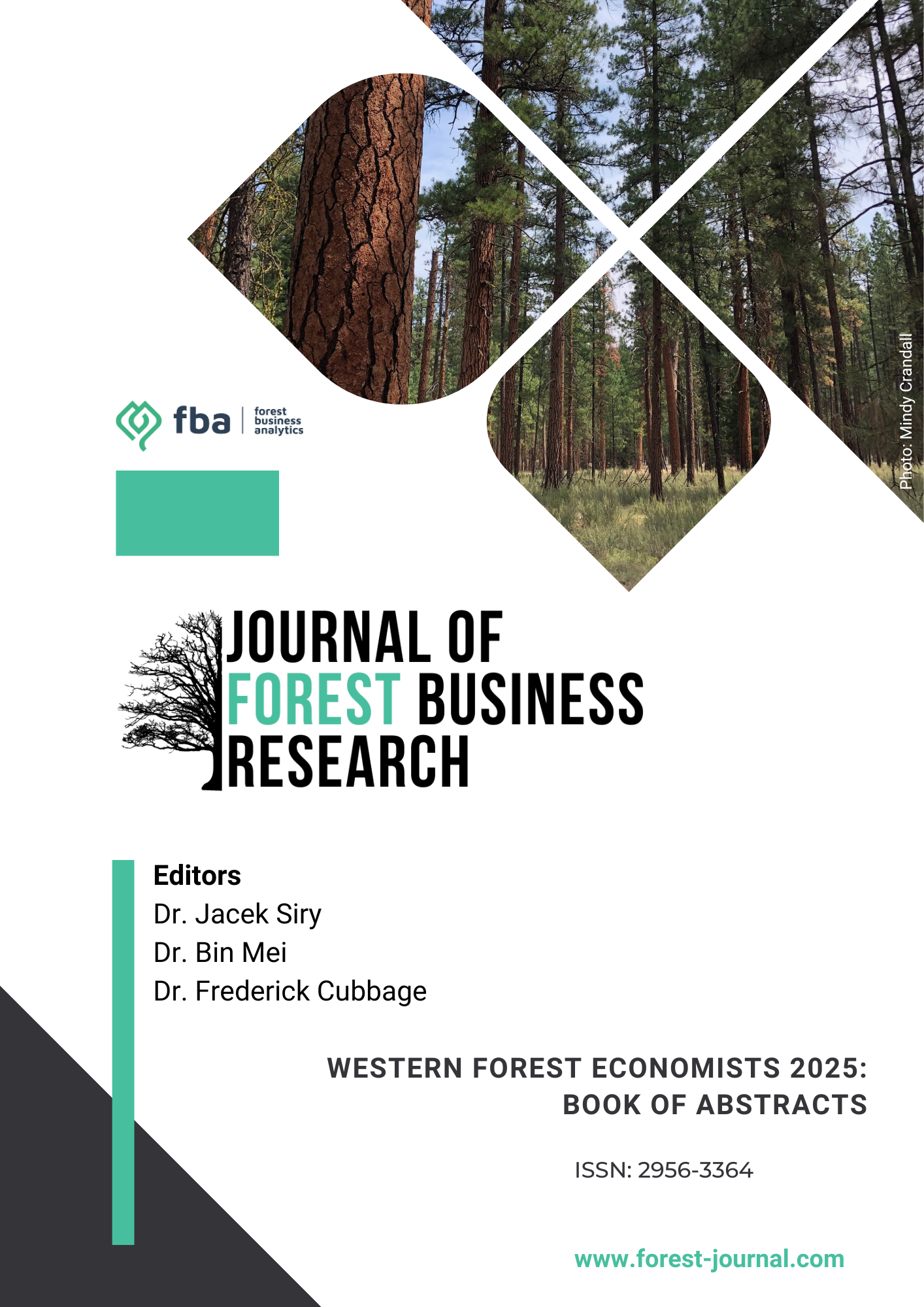Optimal forest management of Douglas-fir in Western Oregon under price uncertainty and wildfire risk
Main Article Content
Keywords
carbon price, Douglas-fir, land expectation value, reservation price model, stochastic timber price, wildfire risk
Abstract
Douglas-fir (Pseudotsuga menziesii) forests in Western Oregon provide economic and ecological benefits but increasing wildfire risks and timber price fluctuations challenge sustainable management. This study applies reservation price model to assess how these uncertainties affect optimal harvest timing and economic returns in even-aged Douglas-fir plantations. Results indicate that wildfire risk reduces reservation prices by up to 15%, prompting earlier harvests to minimize losses. Under high wildfire risk (λ=0.04), optimal harvest age decreases from 65.2 years to approximately 24 years, while land values decline by 50%, from $14,104/ha to $6,414/ha. This decline is steeper than previous estimates, where land values declined between 28.7% and 41.2% under wildfire risk scenarios. The larger reduction in this study suggests higher fire arrival rates and salvageable timber may amplify wildfire-induced economic losses. Underage-dependent wildfire risk, land values also decline, from $14,104/ha to $8,297.5/ha at λ = 0.04, with mean harvest age decreasing from 65.2 to 33.2 years. Increasing salvageable portions from 30% to 70% elevates reservation prices by 5–9%, mitigating losses. At a carbon price of $35/tCO₂e, optimal rotation age reaches 65.2 years in the absence of wildfire risk. However, it drops to 24.0 years under high constant risk and to 32.4 years under high age-dependent risk, indicating that wildfire risk offsets the rotation-lengthening effect of carbon pricing. These findings underscore the need for adaptive management strategies that integrate wildfire risk and market uncertainty. Policy recommendations include enhanced carbon pricing, improved salvage incentives, and risk-adjusted forest management strategies to sustain long-term economic viability.






